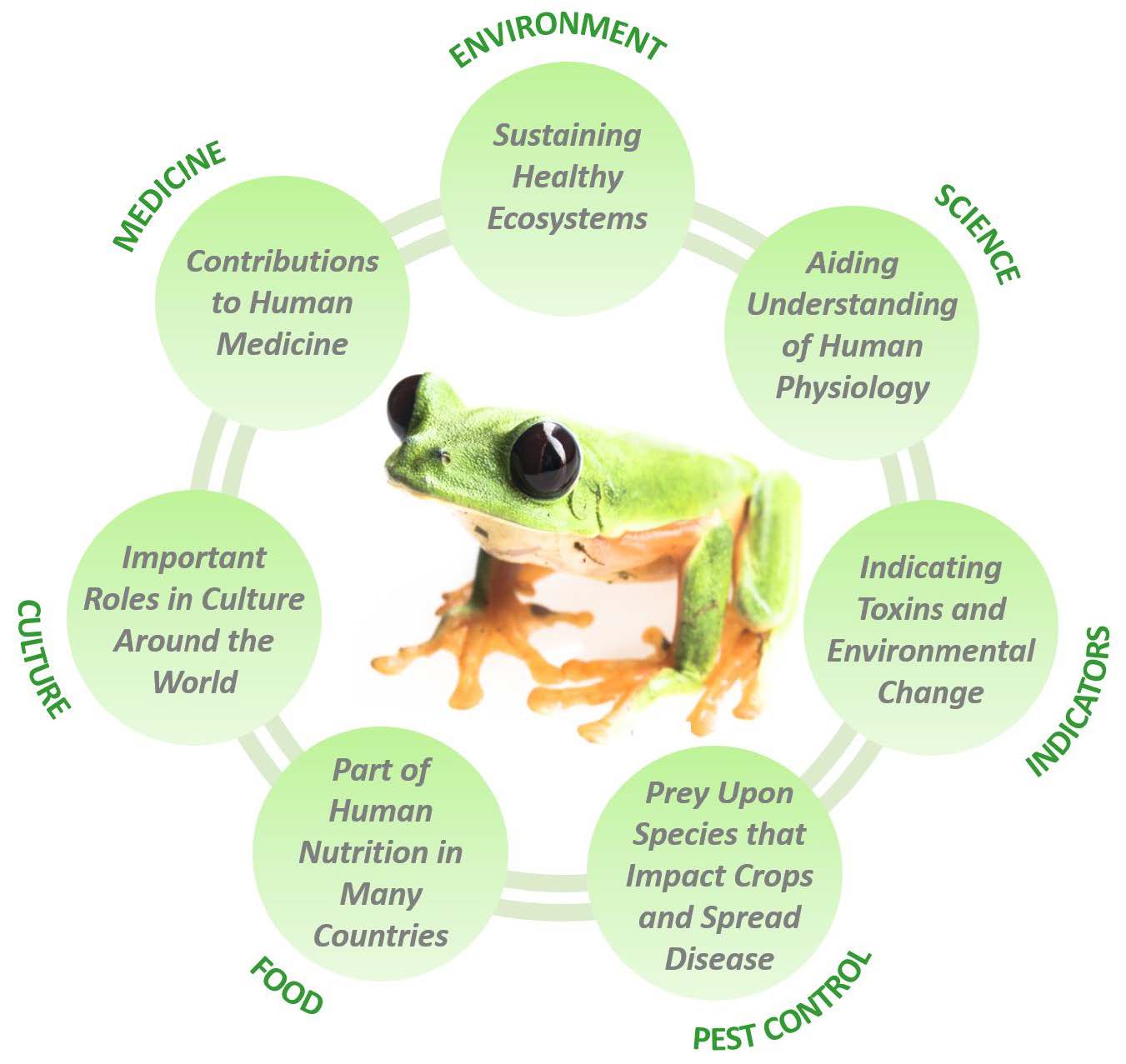Why Amphibians Are Important
Amphibians are an intrinsic part of our lives, although they often go unnoticed and uncelebrated.
Above all, amphibians are fascinating, beautiful, diverse and ancient. Our shared planet would be a poorer place without them.
Some other amazing contributions of amphibians range from:

Though they may slip away quietly, their loss has profound repercussions for our world.
Amphibian declines have aroused concern since the 1950s, and amphibians are currently the most threatened vertebrate group. Declines have been attributed to a range of threats, and many amphibian species are thought to be particularly vulnerable due to their narrow habitat preferences and small geographic distributions. This makes them highly sensitive to the rapid pace of environmental change engulfing natural habitats around the world. Key threats include: habitat destruction and fragmentation; emerging infectious diseases; pollution; invasive species; climate change; and unsustainable exploitation through harvesting and trade. These multiple drivers of extinction also act synergistically, which is predicted to accelerate the rate of amphibian population declines in the future as these stressors intensify.
Why Amphibians Need Our Help
Conserving amphibians has never been more important. Around half of all amphibian species are declining, and the proportion threatened with extinction is thought to be over 40%, making amphibians the most threatened vertebrate group. Once a sanctuary for over 8,000 species, we now live in a world that is increasingly unsafe for amphibians. A world that is unsafe for amphibians is unsafe for other species, not least humankind. The intensifying plight of amphibians mirrors our own struggle, as we try to protect natural resources and bring about a sustainable future for all life on our shared planet.
The needs of amphibians are no different from our own, so the issues they face ─ such as inadequate freshwater management, habitat destruction, climate change, pollution, unregulated use and trade of species, disease dynamics in a shifting world, invasive species, and the unsustainable exploitation of natural resources ─ are extremely pertinent to us, and to all species. These issues, both separately and together, demand the development of collaborative solutions to improve the management of our one and only Earth.
The Amphibian Survival Alliance (ASA) officially launched in 2011, and has since built a committed global alliance of Partners, dedicated to developing a better world for amphibians through coordinated conservation action. ASA promotes and coordinates the implementation of conservation actions for amphibians through an active, growing, engaged, committed, and collaborative partnership around the world. The great need for this endeavour is reflected in the rate of loss of amphibian populations globally, and we face a challenging future as we strive to reverse these trajectories.
We envisage a future where amphibian conservation is fully collaborative and integrated into global conservation priorities — a future where amphibians are valued for their many contributions to this world, as well as their astonishing beauty and variety.
We seek to preserve this variety, as part of healthy ecosystems, for generations to come.







